These how to cook a turkey instructions are for the Turkey Novice and a refresher for the Turkey Expert, as if you need to be refreshed, but you never know.
Christmas dinner is a feast, complete with many fancy side dishes, gravy, cranberry sauce, and the star of the event: the big gobbler. Home cooks right across Canada and the USA sidle up to the kitchen counter and whip up a truly amazing dinner.
But for many people it’s a time to panic. Turkey Rookies can go into a complete tail spin at the mere mention of “preheat oven to 325ºF (160ºC)”.
Roasting a turkey is a very personal experience. There as many methods out there as opinions on who should be our next great leader.
Chefs debate what the perfect temperature to roast is. And some professional cooks will argue that deep fat frying is the way to go. But before you can compete with the pros you need to know the basics. So for all you Turkey Virgins follow these steps for your inaugural turkey success.
First things first
- Buy a meat thermometer. The only safe effective way to tell if a turkey is cooked is by internal temperature.
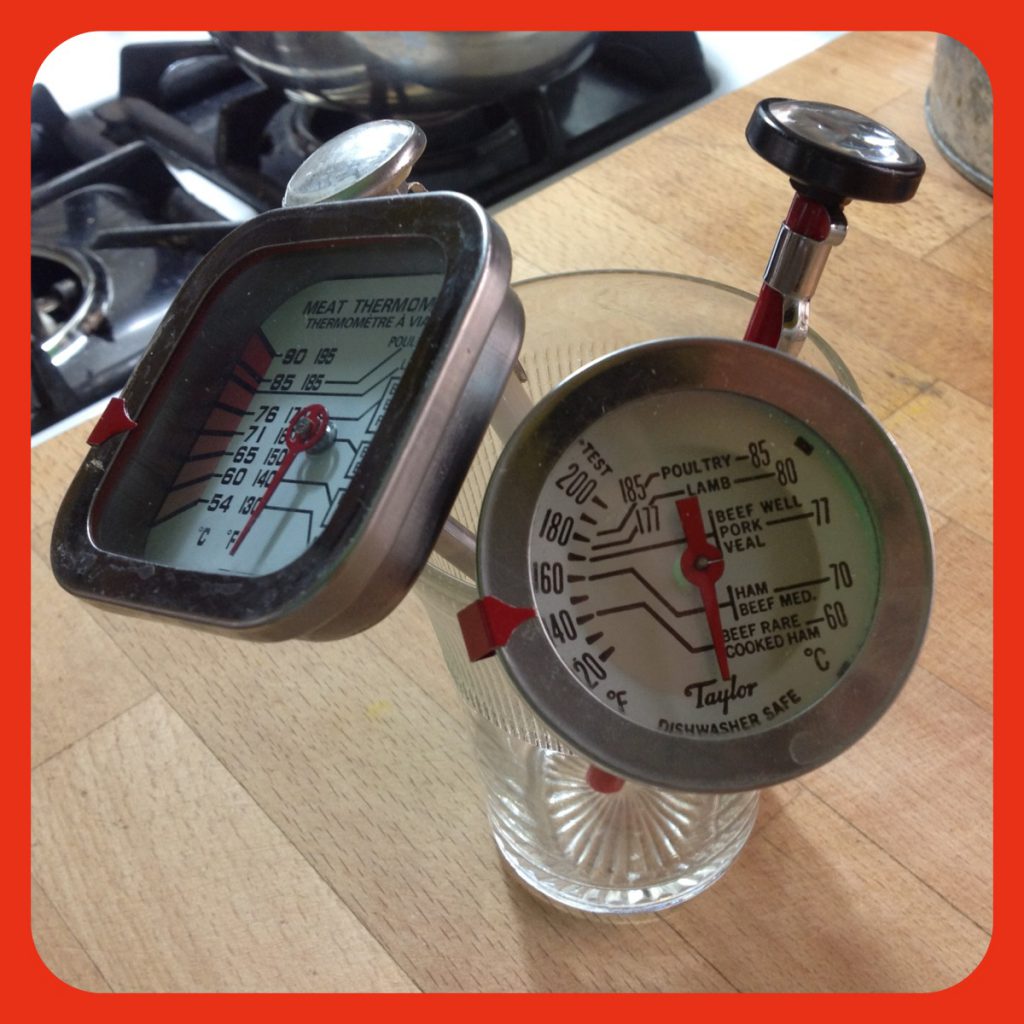
- Decide on how many people you’re serving and then allow 1.5 pounds per person. Sound like a lot? Well you need to factor in that a turkey has bones and then there is the dreaded shrinkage, plus you want leftovers.
- 1.5 pounds is the magic number.
Fresh vs. frozen debate
They both are great choices depending on your needs.
Some people swear by fresh, but I love the convenience of buying a frozen bird. I get to pick it up before the Christmas rush and then store it in my freezer until I need to start the thawing process.
- For a frozen bird: Place the frozen turkey on a dish to catch any liquid and allow one day for every four pounds of turkey.
- Here’s where not goofing around in math class will finally come in handy. A sixteen pound turkey will take four days in the fridge.
- Don’t even think about thawing it on the counter, and yes I know our parents used that lovely method but it is one of the best ways to spend most of the day after Christmas in the Emergency Department.
- You can’t smell if food is contaminated but your gastrointestinal tract can figure it really quickly out.
- To overstate: Thaw the turkey in the fridge.
- Okay, you forgot to take the turkey out of the freezer and its 8:00 am on Christmas morning. Don’t panic, yet. Submerge the frozen bird in cold not hot water. Keep changing the water every 30 minutes. It should take about 30 minutes per pound so that sixteen pound bird should be thawed in 8 hours.
- As long as you don’t stuff it you’ll be eating some time around 9:00 pm. Just another really good reason why you should write yourself a note to take that sixteen pound frozen bird out of the freezer four days before you need it. If you are reading this article on December 21 and you are serving it on December 25, START THAWING YOUR TURKEY IN THE FRIDGE TODAY.
Fresh turkeys are usually bought a couple of days before Christmas. But I totally hate grocery shopping with the frenzied, panicked masses, hence my attraction to the frozen bird.
I really love the turkeys that you cook from frozen. No need to thaw.
The turkeys are brined before they’re stuffed and then flash frozen. Brining at home is very popular, and produces an extremely juicy turkey. I let the pros do the brining for me, which is another reason why I buy the cook from frozen turkeys.
For the turkey challenged these frozen birds are really the easiest to cook. All you do is remove the wrapper, place the frozen turkey on a rack in a shallow roasting pan, rub on some canola oil and put it into the oven. You test for doneness exactly the same way as a standard turkey and it comes out moist and juicy every time. For ease and convenience it’s my bird of choice. I buy either a President’s Choice Cook from Frozen or a Butterball Cook from Frozen. Because they are brined before they are frozen, some people feel that they taste salty. I don’t add salt to any of the vegetable side dishes nor to the turkey stock, so the only salt we are getting from the turkey dinner is from the brined bird.
Wash those hands
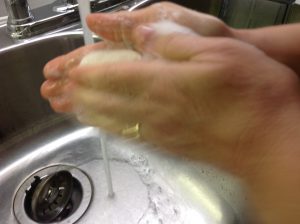
Whenever you are handling food you need to make sure that your hands are clean.
- Wash your hands with soap and water before and after turkey prep
- Wash anything that came into contact with the raw turkey in hot soapy water
- Wipe counters and taps with paper towels and hot soapy water and a disinfectant
- Use paper towels not a cloth for all clean up when using raw protein
To stuff or not to stuff?
Health Canada says no. Stuffing is the ideal breeding ground for bacteria. They recommend that the stuffing is cooked separately either in an oven friendly dish or on the stove top. They also say that if you swear by your family recipe, skip any raw ingredients, stuff loosely, cook till you reach an internal temperature of 165ºF (75ºC) and then remove the stuffing from the bird, you might be alright to go.
How long to cook? These are guidelines: for an unstuffed bird, the time is longer for a stuffed bird, which, according to Health Canada, you aren’t supposed to do! Unless you are cooking a cooked from frozen turkey. Oh, the rules…..
5-6 lbs / 2-4 kg 3-3 ½ hours, stuffed 2 ¼ – 2 ¾ hours, unstuffed
8-11 lbs. / 4-5 kg 3 ½ – 4 hours, stuffed 2 ¾ – 3 ¼ hours, unstuffed
11-18 lbs. / 5-8 kg 4- 4 ½ hours, stuffed 3 ¼ – 3 ¾ hours, unstuffed
18-22 lbs. / 8-10 kg 4 ½ – 5 hours, stuffed 3 ¾ – 4 ¼ hours, unstuffed
22-24 lbs. / 10-11 kg 5 ¼ – 5 ¾ hours, stuffed 4 ¼ – 4 ¾ hours, unstuffed
Getting it into the Oven – the checklist
- Wash the sink out and rinse well.
- Wash your hands
- Place the oven rack in your oven to the lower third
- Preheat oven to 325ºF (160ºC)
- Get out the paper towels
- Get out a shallow roasting pan with a rack and set beside the sink . A shallow roasting works best. You want to roast the turkey, not steam it. For the best ever gravy ever: wash and cut leeks and parsnips in half and place in the bottom of the roasting pan. Place the wire rack over top.
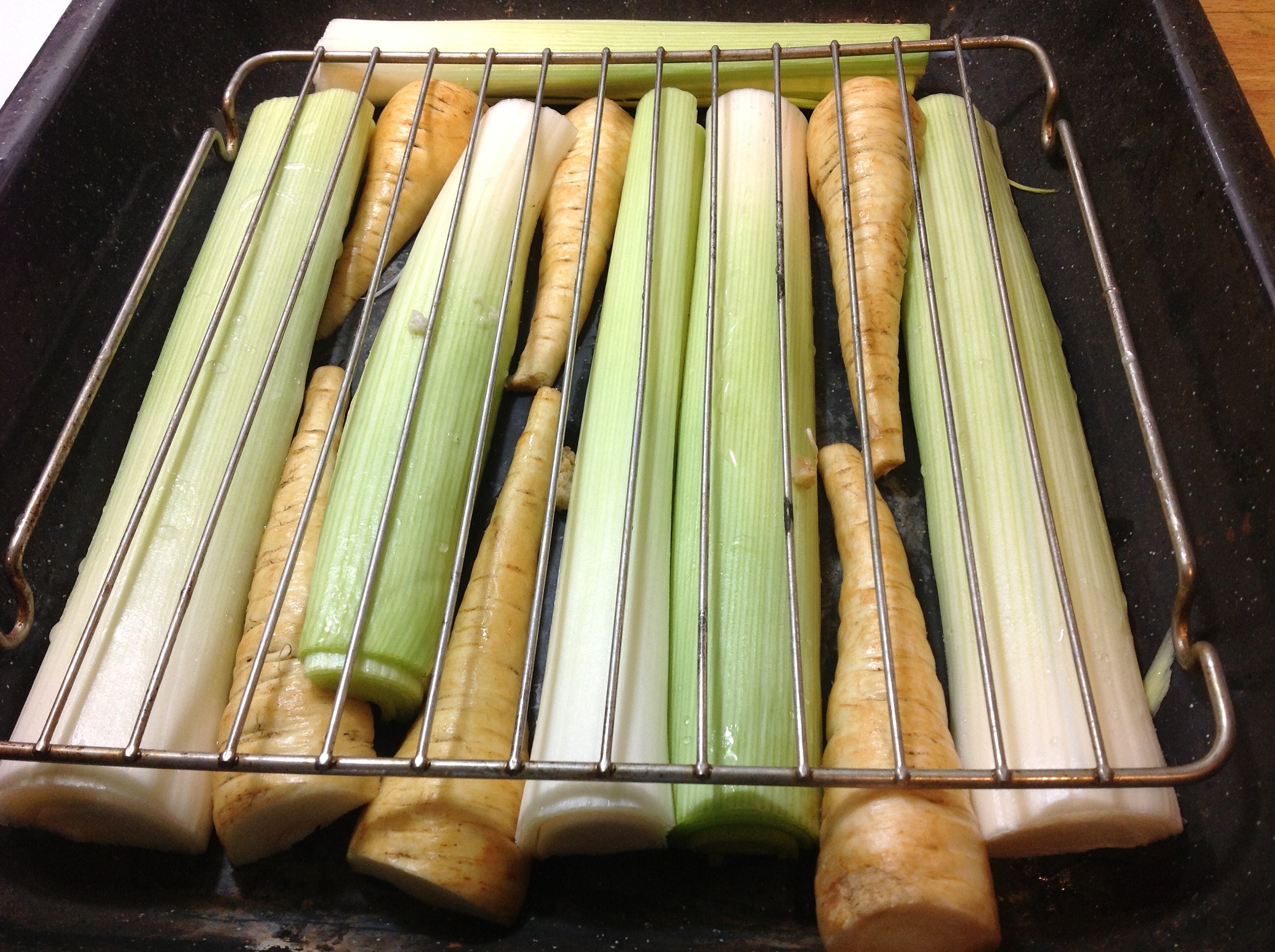
-
Get out the salt and pepper, unless its a cooked from frozen bird, don’t add any more salt
- Have the stuffing ready, if you are going to stuff the bird, see above To stuff or not to stuff?
- Get out a knife or scissors
- Get out a plastic bag for garbage and have it handy
- get out a saucepan filled 2/3’s with water if you are going to make stock for the gravy
- Wash your hands
- Get the turkey out of the fridge
- Place in sink
- Remove the wrapper and carefully discard the wrapper into the plastic bag that you have handy
- Remove the bags of “goodies” from the large inner cavity and the neck from the smaller neck cavity. Either discard or place in the pot you have ready to make a stock. For the stock people you will need a medium saucepan some water, onion or leeks, carrot, and celery. For the non stock people discard the goodies into the plastic bag. Stock people simmer the giblets for at least 4 hours, strain and use for gravy or soup stock.
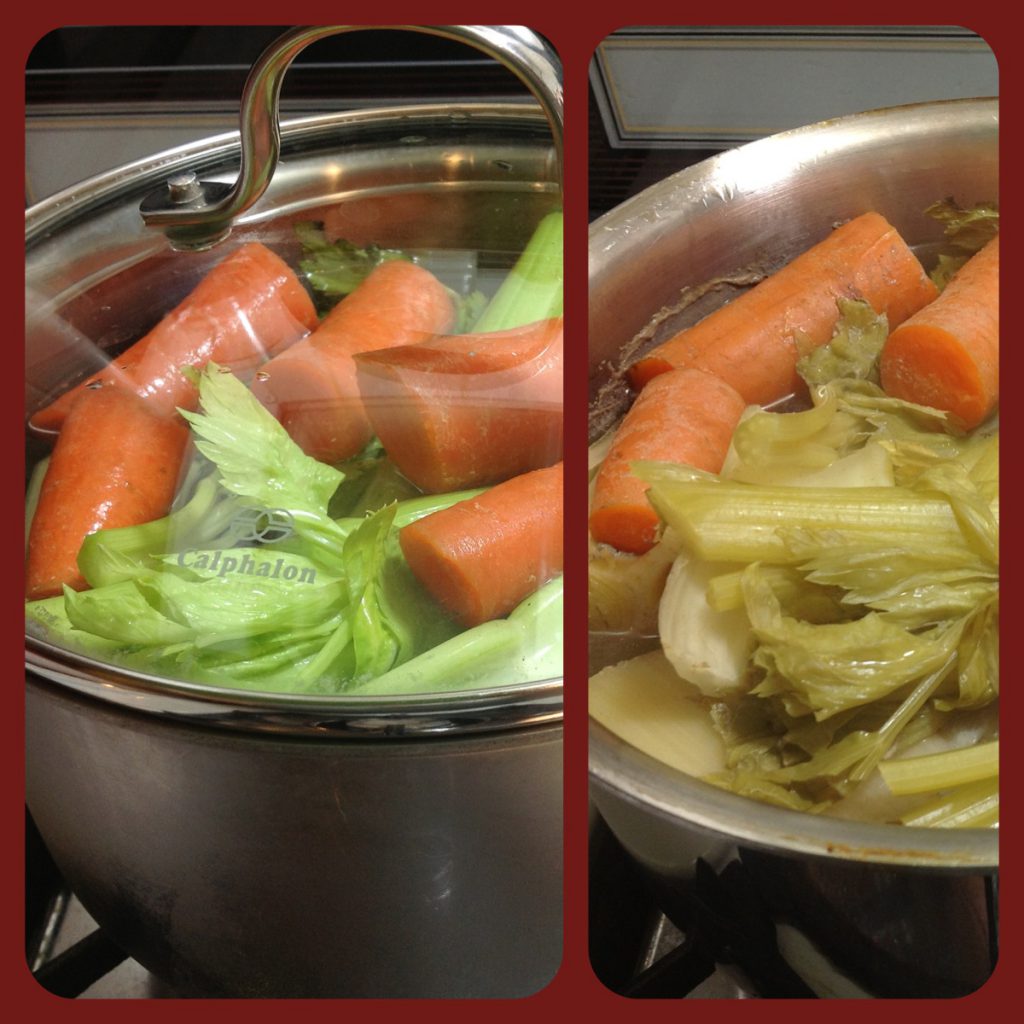
- Meanwhile back at the sink: Tip the turkey so if there is any blood it runs into the sink and down the drain
- Wipe the inside of the turkey with paper towels, discard
- Place the turkey, breast side up on the rack
- Wash hands
- Stuff it if you’re going to
- Wash hands
- Sprinkle the outside of the turkey with salt and pepper, if desired, and give the outside skin a rub with some canola oil.
-
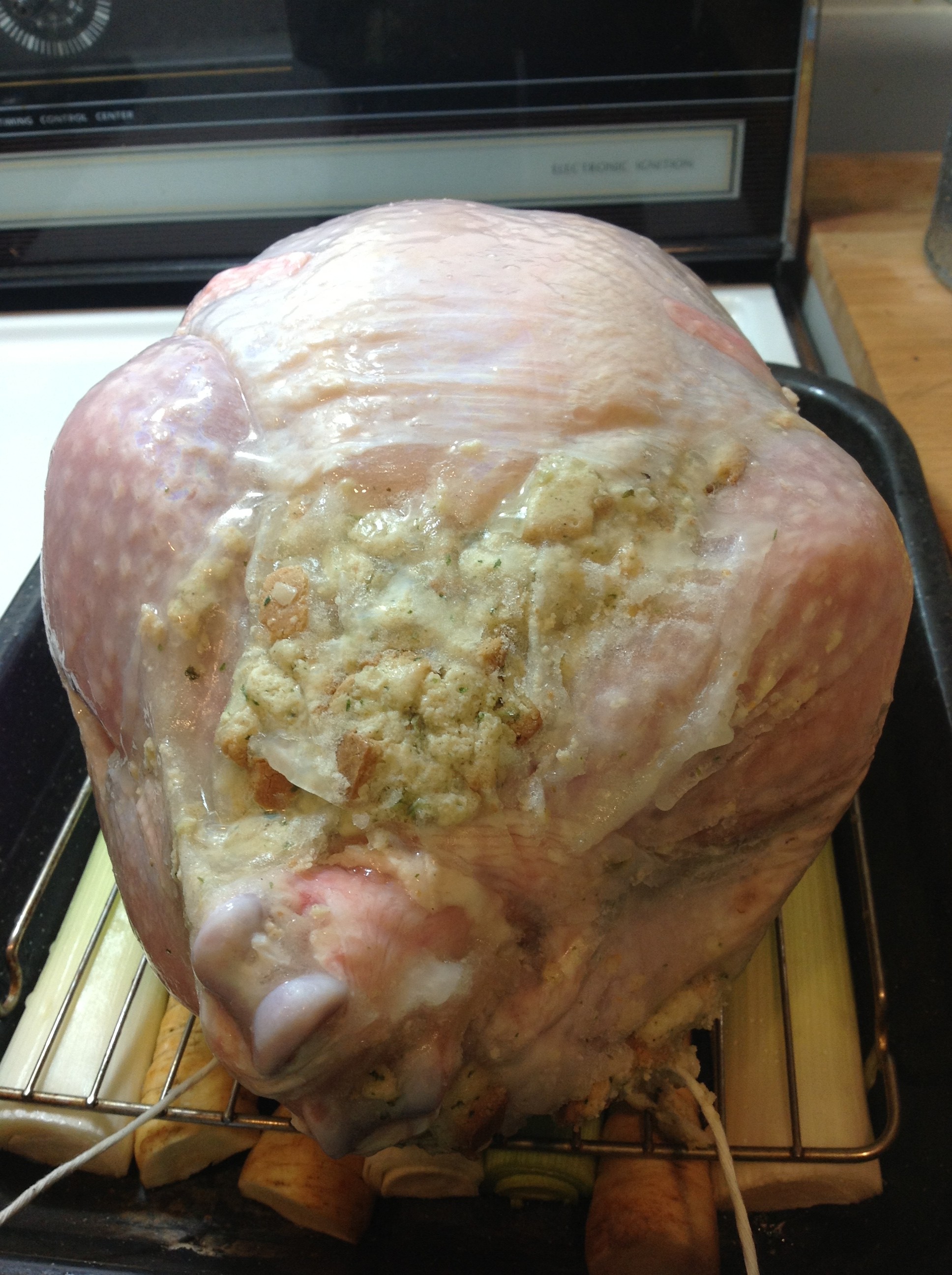
With out a doubt, the easiest turkey to cook for the rookie turkey cook is a cook from Frozen. - Wash your hands
- Place turkey in oven
- Congratulate yourself – you got the bird into the oven
- Set timer for two-thirds of the required cooking time and have a drink or a nap, whatever works for you
- When the timer goes off at the two-thirds mark, wash your hands and take the bird out of the oven and take its temperature. Insert the meat thermometer into the centre of the stuffing. If the legs are getting over cooked cover them with foil.
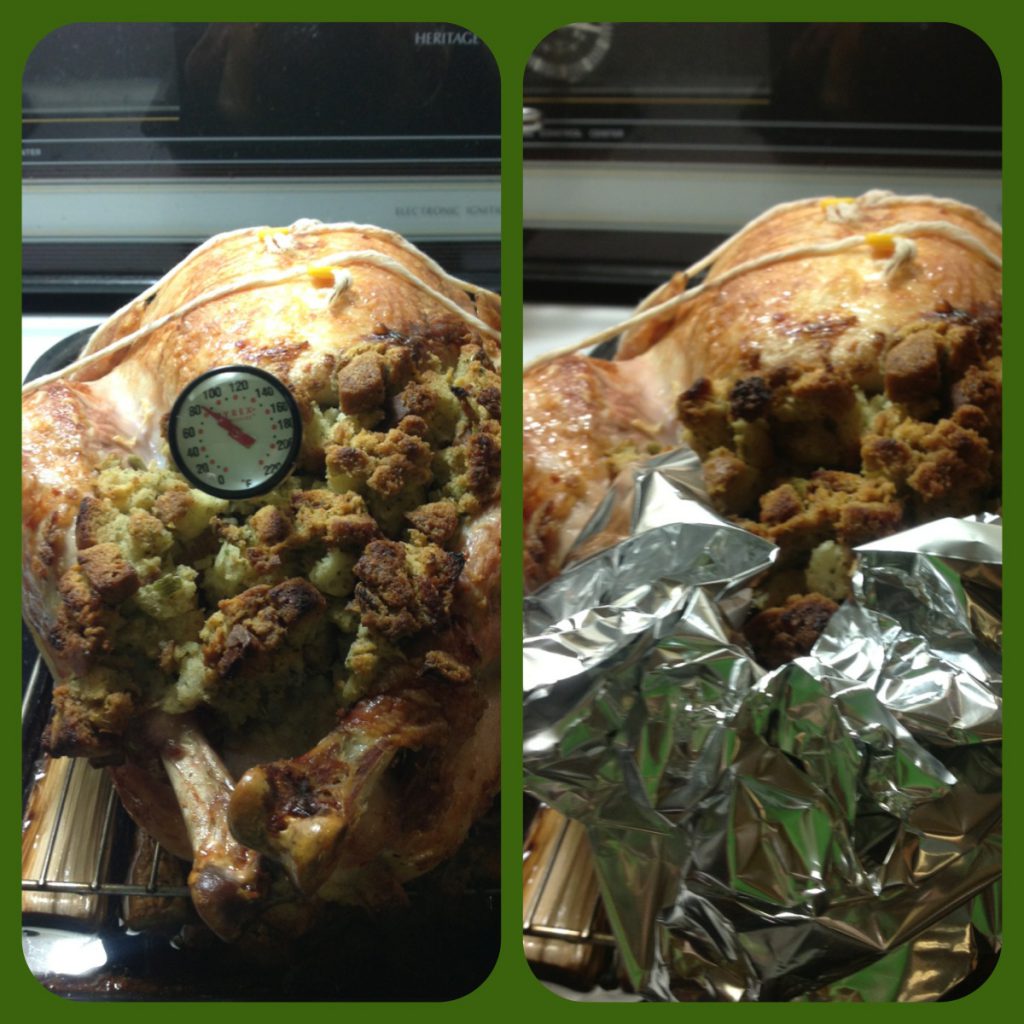
- Basting every hour is a waste of time – it cools down the oven and the bird cooking language that translates into a longer cooking time, and it only tenderizes to 1/8-inch. I baste only in the last hour.
- If the turkey is starting to get too brown place a piece of foil loosely over the darkened places
- Wash your hands
- Place the turkey back into the oven
Is it done?
- It’s all about internal temperatures. Don’t be wiggling the legs or cutting into the turkey. You really need that thermometer.
- Wash your hands and take the turkey out of the oven
- Insert the thermometer into the centre of the stuffing. It should read 165ºF (74ºC) in the stuffing or 180ºF (83ºC) at the deep thigh.
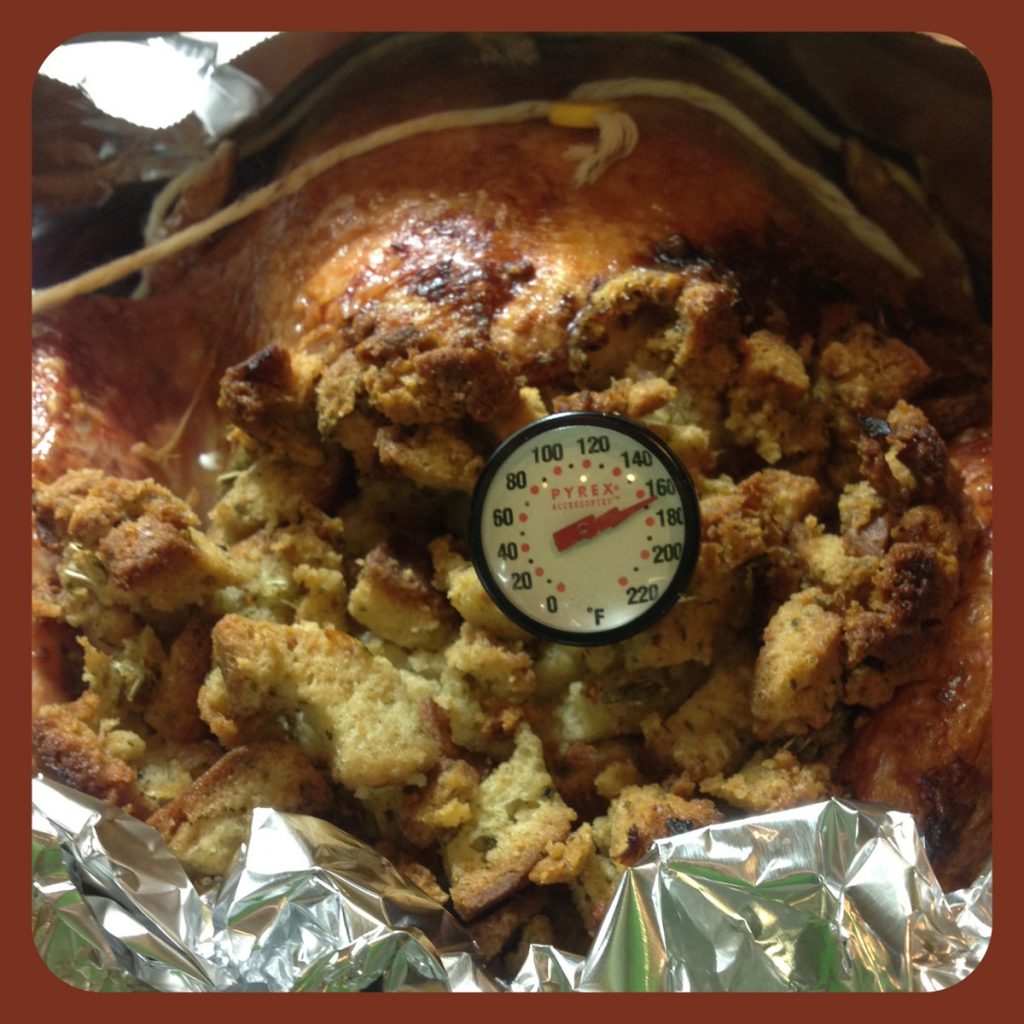
- If it’s hit those temperatures it’s done.
- Remove the turkey from the roasting pan and set it on a carving platter or leave it in the pan.
- Its time for “Turkey Time Out”.
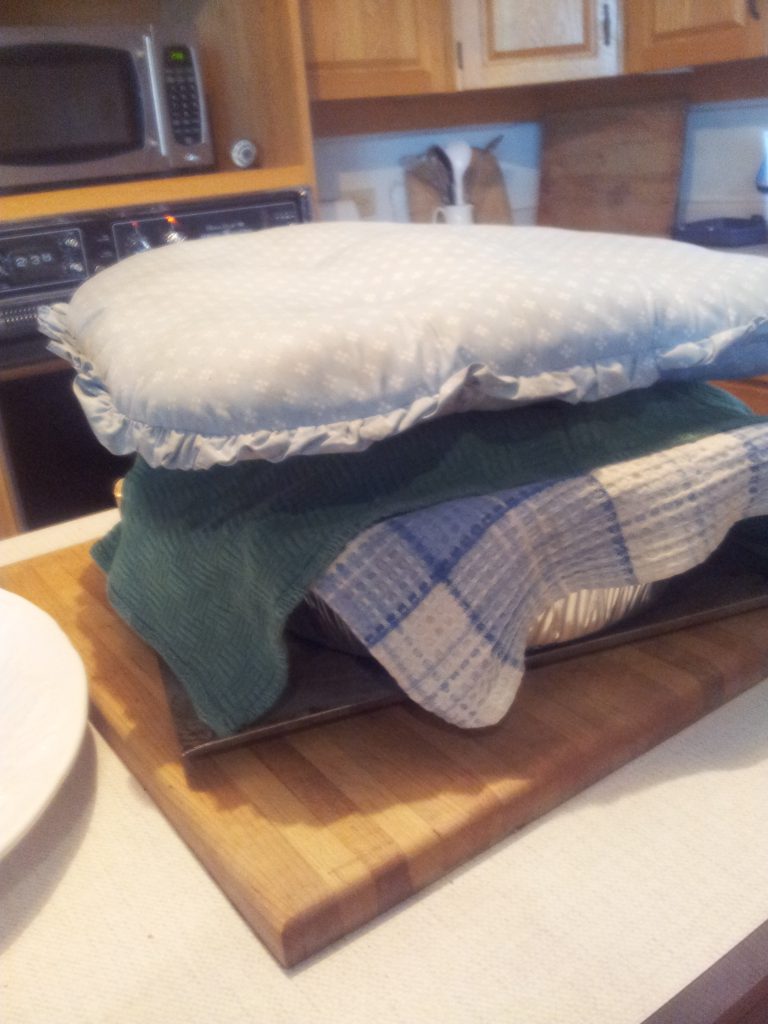
-
- Cover the turkey loosely with foil and then cover with a tea towel and let sit for 15 minutes. This will allow the juices to redistribute ensuring that your turkey is juicy.
- Wash your hands
- Remove foil, remove stuffing.
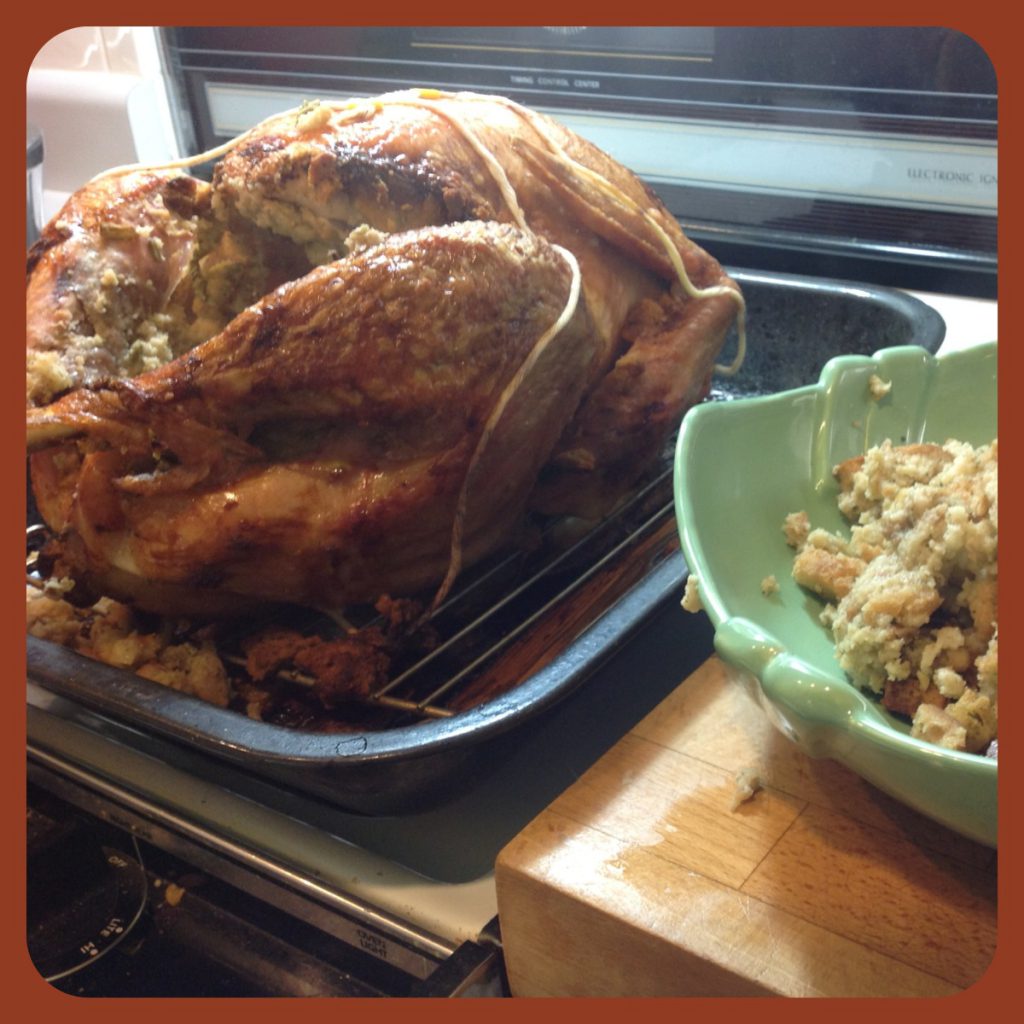
- Carve the turkey. There are many ways to carve a turkey this is the way I was taught.
- Tip #1 – Use a sharp carving knife.
- Tip #2 – Place the turkey on a carving board or a large cutting board.
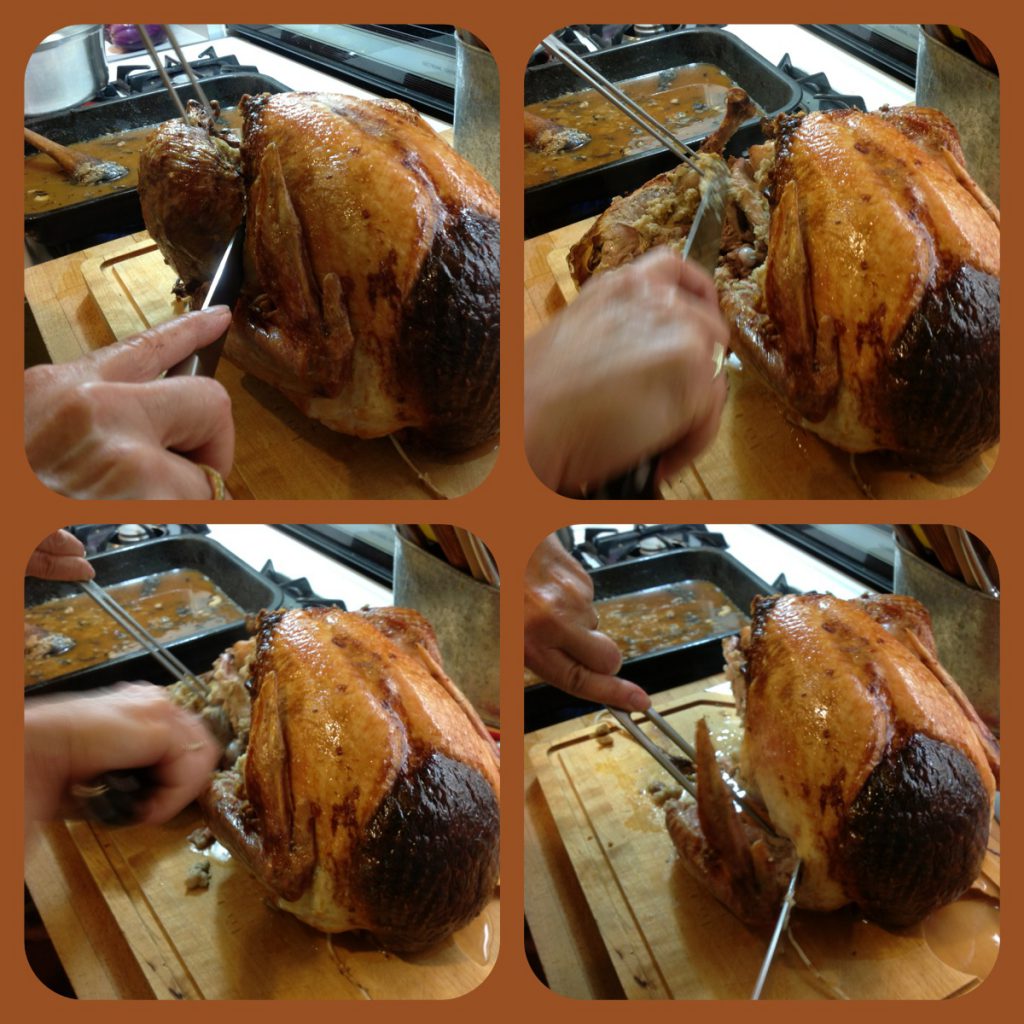
Remove thigh and leg
Bottom Right:
Remove wing
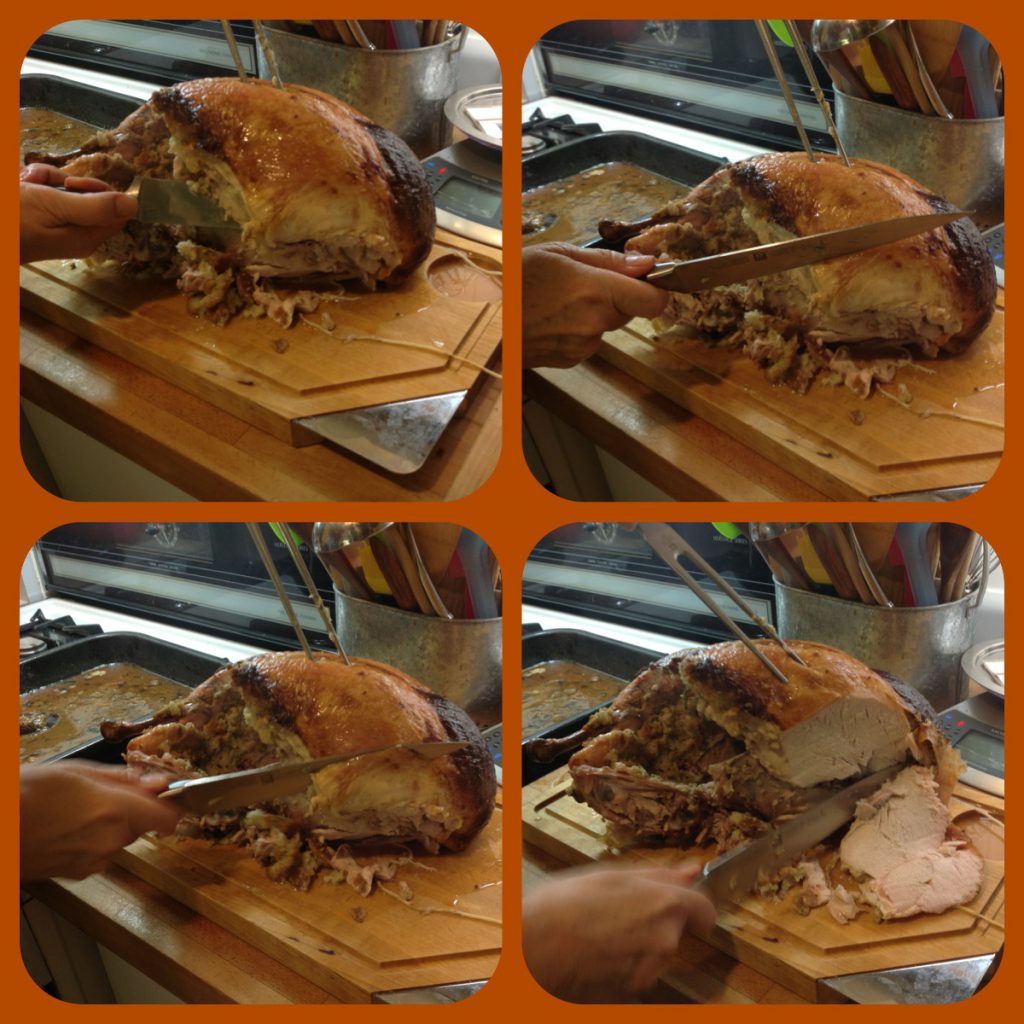
Cut in and up along the rib cage.
Top right:
Start slicing at the bottom of the breast
Bottom Left: continue slicing
Bottom Right: Perfect slices.
- Place cut turkey on a platter
- Wash your hands
- Serve to applause
Side Dishes
- If you’re having a large crowd delegate the rest of the dinner. Get your friend to bring some nibbles, your Aunt Bernice to bring her world famous sweet potatoes, and your sister to bring dessert.
- Christmas is supposed to be about family, friends and being grateful for what we have not a sentence to kitchen hell.
- Don’t be the Christmas martyr this year, ask for help.
Still scared, panicking and feel you need more help? You can call or text the Butterball hotline and speak to a home economist:
Turkey Text Line: 1-844-877-3456
They are manning the phones. Trust me they have heard it all and can solve any of your turkey dilemmas. My peeps know everything you ever wanted to know about turkeys! For any turkey related questions go to butterball.ca
And if any of your guests are vegetarian click here for a recipe everyone will enjoy.
Note: This is not a paid post, I just love cooking a cook from frozen turkey!
Great turkey tips with a dash of humour! Thanks.
Pingback: How To Cook Your First Turkey - Nurse Loves Farmer
You mention great gravy in this article. Something about leeks and parsnips? Please expound! 🙂
Hi Heather,
I make a very unconventional gravy….I remove the parsnips and the leeks and put them into my Vita Mix and pulverize them. Meanwhile I add flour to the fat in the roasting pan, stirring well and browned, and then slowly blend in any vegetable water, stock or potato water I have saved, then add the leeks and parsnip puree and cook until think. Its really good.
Peace, love and fibre,
Mairlyn
Pingback: Holiday Traditions – Mairlyn Smith
Hi! You mentioned Presidents Choice turkey. Is the stuffing better than Butterball? (I don’t like the Butterball stuffing – at all.)
The stuffing in the pictures on this site look good. Much lighter than Butterball.
It’s personal choice. My husband loves the stuffing in the PC one I love the stuffing in the Butterball.
Peace, love and fibre,
Mairlyn
I’ve always stuffed by turkeys but more and more it’s about making it on the side. I tried one year to make a ‘never fail’ in the crock pot and it turned out like soup. So, back I went to stuffing BUT I would prefer to make it on the side. Do you have a tried and true stuffing?
Sorry I don’t, but on the side dressing is better cooked without a lid.
Hope that helps,
Peace, love and fibre,
Mairlyn
Have enjoyed cook from frozen many times, I agree! A couple of years ago cooked a fresh, farm raised, la de da, hoop de do, free range bird AND a frozen utility bird. Carved both in similar style, requested all present, (14), to try each and vote. One (1) in fourteen (14) selected the last de da free range bird! Enough said. BTW, the free range required re-plucking, it was filthy
Love that you had a vote!
Thanks for sharing,
Peace, love and fibre,
Mairlyn
Mairlyn you always say you dont want to steam your meat. Why not? I grew up and still do always put water in the bottom of the roaster with onions and the innards for flavour, seasonings, and cover the Turkey!
I personally think the turkey has a different flavour and texture when its oven roasted in a shallow pan. Steaming makes the meat sinewy. I prefer it to cut all in one piece. It might come down to the roasting pan, your personal choice and family traditions.
As long as it works for you, keep doing it.
Peace, love and fibre,
Mairlyn